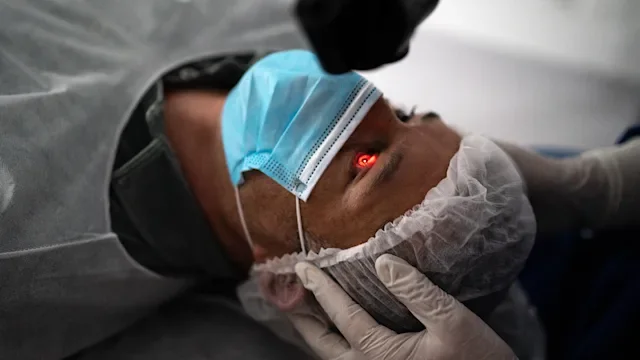Key takeaways:
Health savings accounts (HSAs) allow you to use pretax dollars to pay for qualified medical expenses. This lets you save money on everyday healthcare items.
Your HSA can help you cover qualified emergency, dental, vision, and family medical expenses.
The CARES Act has expanded the list of HSA-eligible items to include over-the-counter purchases such as allergy, cough, and cold medications.
A health savings account (HSA) is a tax-exempt account that helps you save and pay for qualified healthcare expenses. To open and contribute to an HSA, you must be actively enrolled in a qualifying high-deductible health plan. Every dollar that you contribute to an HSA can pay for eligible medical expenses. When you withdraw money from the account, you won’t have to pay taxes on the funds as long as they are used for HSA-eligible expenses.
Below, we’ll explain how to use an HSA and provide you with 87 HSA-eligible expenses for 2025.
How do you use an HSA?
An HSA is a triple tax-advantaged account to help you manage your healthcare expenses. When you enroll in an HSA through your employer, your contributions are typically made with pretax dollars. If you contribute to your HSA with after-tax dollars — which is usually the case if you are self-employed — you’ll receive a deduction when you file your tax return. As long as the money is used for eligible medical expenses, you won’t have to worry about paying taxes on it later.
Search and compare options
To get the most out of your HSA, make sure you log in regularly to review your account balance and track expenses. Many HSA providers also offer an HSA benefits card, which works like a debit card for eligible purchases. Before spending, check with your HSA administrator to ensure your expense qualifies.
What can you buy with your HSA?
You can use your HSA to purchase a wide range of qualified medical expenses that are not covered by your health insurance or reimbursed by another plan. Expenses that qualify for the medical- and dental-expense deduction meet the criteria. The main purpose of the expense must be to ease or prevent a physical or mental illness.
Below are common categories of eligible expenses.
1. Common or routine medical expenses
Annual exams
Baby ointment
Band-Aids
Breathing strips
Breast milk storage bags and bottles
Breast pumps
Certain types of lip balm
Certain types of sunscreen
Copays for prescriptions and office visits
Crutches
Dental care (see below)
Diaper-rash cream
Nursing pads
Pedialyte
Prescription medications
Vision care (see below)
Wheelchairs
X-rays
2. COVID PPE supplies
The IRS in 2021 announced that personal protective equipment (PPE) items were considered a qualified expense. PPE is used to prevent the spread of the coronavirus. The IRS made the following items HSA-eligible expenses:
Hand sanitizer
Masks
Sanitizing wipes
How does a health savings account (HSA) work? Find out how contributing to an HSA can help you save on healthcare costs today and during retirement.
HSA vs. flexible spending account (FSA): Depending on your healthcare needs, an HSA could offer more flexibility and long-term savings than an FSA.
Can you use your HSA to pay for lip balm? Lip balm is typically HSA eligible if it meets certain requirements. Here’s what you should know.
3. Menstrual products and OTC medications
The Coronavirus Aid, Relief, and Economic Security (CARES) Act also added some medical expenses to the list. The new items added were menstrual products and over-the-counter (OTC) medications.
The following 18 items are examples of now-qualified medical expenses:
Acetaminophen (Tylenol)
Heartburn medications
Ibuprofen (Advil, Motrin)
Liners
Menstrual cups
Nasal sprays
Pads
Period panties
Sleep aids
Tampons
Thermometers
Tums (calcium carbonate)
Read more like this
Explore these related articles, suggested for readers like you.
4. Family-planning products
Your HSA can also pay for family-planning healthcare expenses, such as:
Contraceptives
Infertility treatments
Ovulation monitors
Pregnancy tests
Tubal ligations
5. Emergency medical expenses
These eight emergency medical expenses may also be covered by your HSA:
EMS devices
Medical records fees
Urgent care services
6. Mental health expenses
Studies show that almost a quarter of U.S. adults experienced a mental illness in 2022. If you need to pay for mental health expenses out of pocket, your HSA may cover the following:
Mental health counseling
Transportation to mental health appointments
7. Dental care
HSA accounts can be used to pay for care given by an orthodontist, a dental hygienist, or a dentist. This includes but is not limited to the following nine dental care items and services:
Dental implants for a restorative procedure
Dental X-rays
Orthodontist visits
Teeth whitening is not covered, since it is considered a cosmetic dental procedure and not health related.
8. Vision care
Before scheduling a vision appointment, it’s important to understand which expenses are covered by insurance. You can typically use your HSA to cover out-of-pocket payments for the following eight vision expenses:
Contact lens cases
Contact lens cleaning solution
Eye drops
Eye exams
Eyeglass cases
If you are visually impaired or blind and have a guide dog, here are some additional HSA-eligible expenses:
Buying a guide dog to assist with daily activities
Training a guide dog
Visiting the vet
Are dependent care expenses HSA eligible?
If you have a dependent care flexible spending account (FSA), you can use the funds in the account to pay for qualified child and dependent care expenses tax-free. The IRS has specific criteria that you must meet for eligible expenses, including the expenses being necessary to allow you to actively look for work or allow you to work.
Eligible expenses may include the following if they meet certain criteria:
Adult day care
Babysitting
Before- and after-school care
Day camp
Although you can contribute to an HSA and a dependent care FSA at the same time, you cannot use the funds in an HSA for dependent care expenses.
Quiz: Think you’re an HSA pro? Let’s find out
Which common healthcare expenses are not HSA eligible?
Insurance premiums may not always be considered a qualified expense. You can use your HSA to pay for insurance premiums only if they fall into one of these four categories:
Healthcare continuation coverage (coverage under COBRA)
Healthcare coverage while receiving federal or state unemployment
Medicare and other health coverage if you’re 65 or older
An example of an insurance premium you cannot claim is Medicare supplemental insurance, such as Medigap.
Preventive care that is not prescribed by a healthcare professional is not always HSA eligible. Some examples of common healthcare expenses that fall into this category are:
Personal hygiene items, such as toothpaste and deodorant
Vitamins and nutritional and herbal supplements for general health
Weight-loss programs for general health or well-being
But there is an exception. If you have a doctor’s note — also called a letter of medical necessity (LOMN) — you may be able to buy items that typically wouldn’t be HSA eligible. The LOMN briefly outlines your condition and why you need a specific product or service.
The following are three expenses that may qualify for the exception. These items may qualify if they are used to treat a medical condition. Before you purchase an item, check with your HSA administrator to determine if your expense is HSA eligible with an LOMN.
Health clubs
Weight-loss programs
What are the HSA limits for 2026?
Each year, the IRS raises the HSA contribution limit to keep up with inflation. The 2026 contribution caps increased by $100 for individuals and $200 for families.
The table below shows the HSA contribution limits based on your age and coverage type. If you’re 55 or older, you can contribute an extra $1,000 to your HSA. This is called a catch-up contribution. So people who meet the age requirement can contribute up to $5,400 as an individual or $9,750 for a family plan in 2026.
Year | Individual | Family | Catch-up contribution (55 and over) |
2026 | $4,400 | $8,750 | $1,000 |
2025 | $4,300 | $8,550 | $1,000 |
Source: IRS
To take advantage of the 87 HSA-eligible expenses mentioned above, you must have funds in your HSA. The more money you contribute every year, the more money you’ll be able to invest in assets that can boost your account balance. The growth in your account can provide you with more money to help offset the rising cost of healthcare. It is important to capitalize on contributing to your HSA to prepare for healthcare costs.
Frequently asked questions
No, you generally cannot use an HSA to pay for a gym membership if it’s for general fitness or wellness. But if a healthcare professional prescribes a gym membership to treat a specific medical condition or to improve a function of the body, it may qualify as an HSA-eligible expense. For example, a membership prescribed as part of physical therapy for an injury could qualify. In that case, you’ll most likely need an LOMN from a healthcare professional and should keep all related documentation to show it’s a qualified medical expense.
Yes, you can withdraw money from your HSA for nonmedical expenses. But the amount you take out will be taxed as income. If you’re under age 65, you’ll also pay a 20% penalty. Starting at age 65, you can withdraw funds for any reason without the penalty, but nonmedical withdrawals are still subject to income tax.
Do expenses for spouses and dependents go toward your HSA?
Yes. You can use your HSA to pay for qualified medical expenses for your spouse and for dependents you claim on your tax return. To qualify, the dependent can’t file a joint return and their gross income cannot exceed the annual IRS threshold. They also can’t be claimed as someone else’s dependent.
No, you generally cannot use an HSA to pay for a gym membership if it’s for general fitness or wellness. But if a healthcare professional prescribes a gym membership to treat a specific medical condition or to improve a function of the body, it may qualify as an HSA-eligible expense. For example, a membership prescribed as part of physical therapy for an injury could qualify. In that case, you’ll most likely need an LOMN from a healthcare professional and should keep all related documentation to show it’s a qualified medical expense.
Yes, you can withdraw money from your HSA for nonmedical expenses. But the amount you take out will be taxed as income. If you’re under age 65, you’ll also pay a 20% penalty. Starting at age 65, you can withdraw funds for any reason without the penalty, but nonmedical withdrawals are still subject to income tax.
Do expenses for spouses and dependents go toward your HSA?
Yes. You can use your HSA to pay for qualified medical expenses for your spouse and for dependents you claim on your tax return. To qualify, the dependent can’t file a joint return and their gross income cannot exceed the annual IRS threshold. They also can’t be claimed as someone else’s dependent.
The bottom line
You can use your health savings account (HSA) to pay for healthcare costs such as emergency, dental, and vision expenses. The CARES Act has expanded the list of HSA-eligible items to include over-the-counter purchases, making these items tax deductible.
Confirm with your HSA administrator which expenses are eligible. You’ll also need to determine if you will need a letter of medical necessity from a healthcare professional.

Why trust our experts?


References
Internal Revenue Service. (2021). Face masks and other personal protective equipment to prevent the spread of COVID-19 are tax deductible.
Internal Revenue Service. (2024). Publication 502 (2024), medical and dental expenses.
Internal Revenue Service. (2025). Frequently asked questions about medical expenses related to nutrition, wellness and general health.
National Institute of Mental Health. (2024). Mental illness. National Institutes of Health.
















